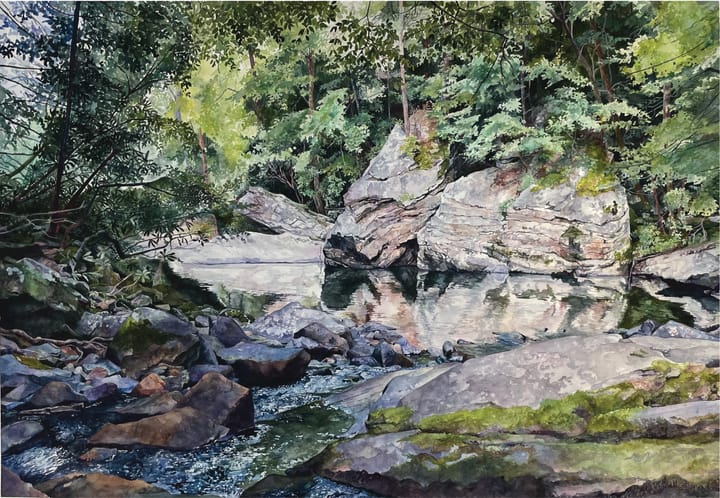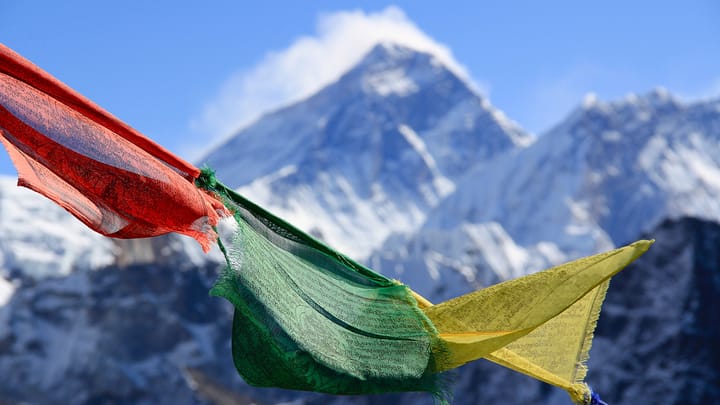Courtney Sanders: The Bigger Issue
Following recent events, Courtney Sanders reflects upon wider issues in the outdoor industry.

If you missed our initial coverage of the Joe Kinder incident, you can find it here, and read about the response from the industry here.
TOJ: Have you ever experienced or been aware of any level of harassment from within the outdoor adventure industry?
CS: Like any other industry, the outdoor adventure industry is not immune to harassment. I have personally been a victim of bullying on several occasions, and by more than one person (many more) in this industry. Social media in particular, provides an environment that enables bullying and harassment. For example, having a public profile allows for anyone, including many people whom I don’t know, to comment or send derogatory and demeaning messages. In addition, there are several public “comedy” accounts made with the purpose of mocking, teasing, or slandering public figures. Aside from the public realm of social media, private accounts may be made with the same purpose, and give a false sense of security that the negative content won’t be exposed. This leads to situations like the one our community is currently witnessing online.

TOJ: What is your assessment as to how all parties have behaved over the course of the last few days?
CS: I think that it is important to first and foremost say that any form of bullying or harassment is unacceptable. This particular incident involved a very sensitive topic in the outdoor industry and amongst top-level athletes, body image. Body shaming has very dangerous repercussions, including lasting issues like body image dysmorphia and eating disorders. This is totally unacceptable behavior, and shocking that a professional athlete would be the instigator in this type of bullying.
The initial reactions in this situation were very emotional and stemmed from previous insecurities and frustrations. Because social media was the main method of communication as this unfolded, it’s important to recognize the pressures that professional athletes experience when under the scrutiny of thousands of viewers. Any online content is subject to criticism, both personally and professionally.
Joe posted hurtful and inflammatory content on a private Instagram account, which assumingly, he never thought would reach the subjects of his posts. I don’t think Joe was acting maliciously, but his humor crossed a line into an unacceptable and offensive place which he admitted in his public apology. Simply, he was being disrespectful and unprofessional. This was not a singular offense, and after a long-term accumulation, Sasha, myself, and others decided that it was time to speak out.

I believe that major industry companies such as Black Diamond and La Sportiva acted in their own best interests, which likely includes preserving company image and morality, when deciding to end relations with Joe. Personally, I think that there is room for improvement on all sides, and the potential for those companies to address bullying and harassment with the help of Joe could have been a huge learning experience. Perhaps a larger and more constructive conversation could be started by working together, rather than terminating the athlete and ending the dialogue.
TOJ: Are these events an indication of a wider problem within the outdoor industry? Do we need to have an open and serious conversation?
CS: Events like this definitely indicate that there is much to be improved upon in the outdoor industry, but I don’t believe that this industry is isolated in that respect. Currently in the U.S., there is societal unrest and intolerance concerning harassment and discrimination. Making the world a better place for everyone to live in is not an easy task, and when leveling the playing field, those who are used to advantage will not all quietly back down.
It is a tumultuous time to live in this country, and also fantastic to see such social progression. The outdoor industry is of course profit-driven, and this makes it harder for companies to take political or social stances on topics due to fear of public backlash or loss of sales. While this is understandable to an extent, we need leaders and major influencers to open the conversation and stand up between right and wrong, including talking about bullying and harassment. This is a large problem even outside of the social media and athlete realm, it reaches into the workplace and into the heart of our community- the outdoors.

This industry could set the example by being an accepting and welcoming community which benefits all members. Our greatest resource is access to the outdoors, why not use this to inspire and include everyone?
TOJ: Can you also address the overall lack of diversity in outdoors, and the gender gap in the US as above, vs rest of the world? Keeping in mind that US media, culture and conversation often drives what happens elsewhere in the world too.
CS: In many ways, the outdoor industry is taking steps to address the lack of diversity within its communities. One of my favorite resources is Diversify Outdoors, which is a coalition of influencers aimed at promoting diversity within this industry (https://www.diversifyoutdoors.com).
While progress is being made, it is very important to recognize that there is so much more to be done. One of the building blocks in contributing to this movement is education. Many people are not aware of the extent of issues such as lack of diversity or the gender gap within this industry. By educating members of our communities on ways to raise awareness and address these problems, we are already taking the first steps in creating a better environment.
I can’t speak for other outdoor communities across the world, but I recognize that the U.S. in many ways sets an international precedent. I believe that addressing these issues starts with us, and I am working on ways to use my platform and my voice to make the outdoors and our communities a better place for everyone.

Featured Image Credit: Alex Kahn





Comments ()